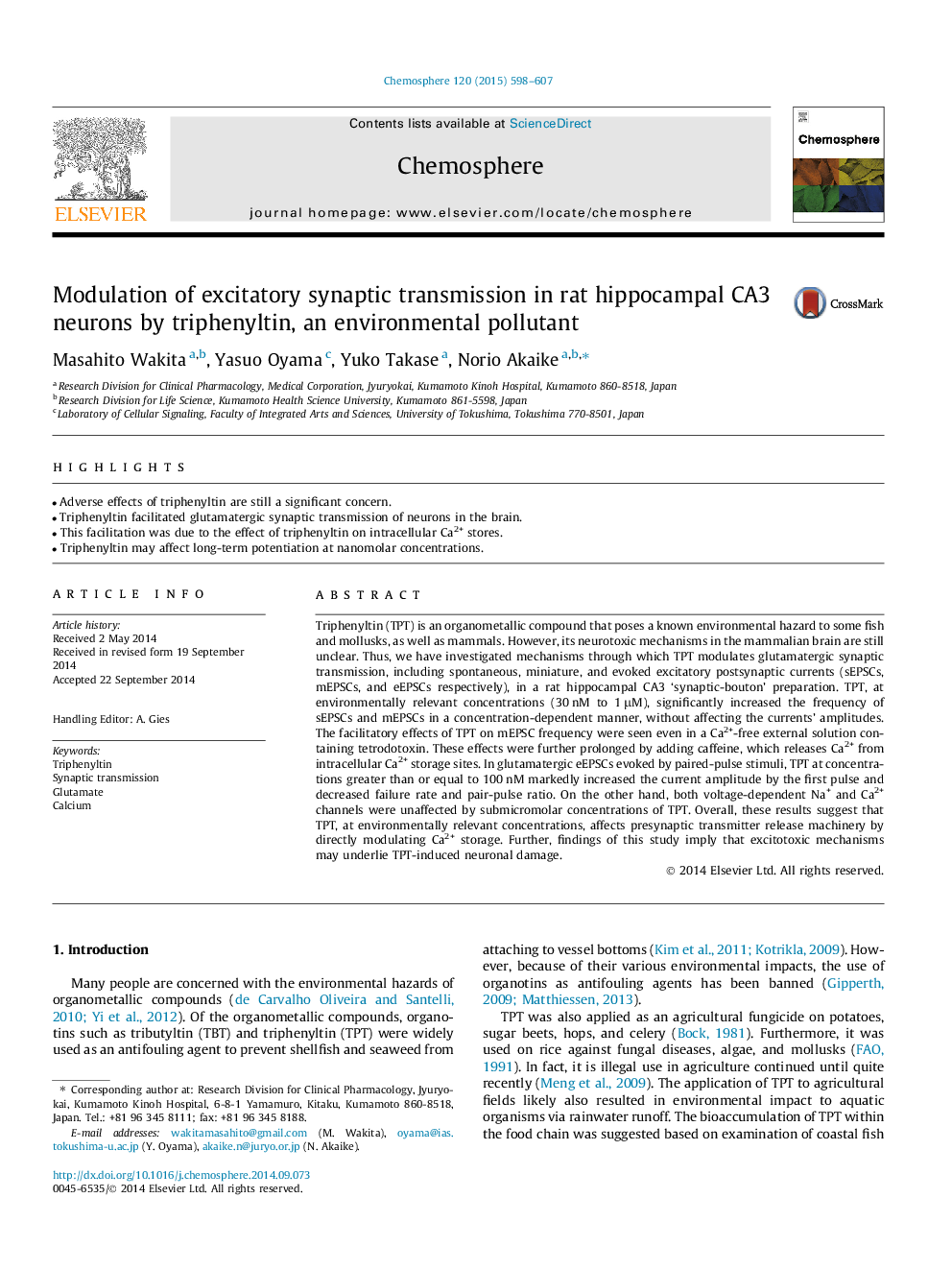| Article ID | Journal | Published Year | Pages | File Type |
|---|---|---|---|---|
| 6308282 | Chemosphere | 2015 | 10 Pages |
Abstract
Triphenyltin (TPT) is an organometallic compound that poses a known environmental hazard to some fish and mollusks, as well as mammals. However, its neurotoxic mechanisms in the mammalian brain are still unclear. Thus, we have investigated mechanisms through which TPT modulates glutamatergic synaptic transmission, including spontaneous, miniature, and evoked excitatory postsynaptic currents (sEPSCs, mEPSCs, and eEPSCs respectively), in a rat hippocampal CA3 'synaptic-bouton' preparation. TPT, at environmentally relevant concentrations (30 nM to 1 μM), significantly increased the frequency of sEPSCs and mEPSCs in a concentration-dependent manner, without affecting the currents' amplitudes. The facilitatory effects of TPT on mEPSC frequency were seen even in a Ca2+-free external solution containing tetrodotoxin. These effects were further prolonged by adding caffeine, which releases Ca2+ from intracellular Ca2+ storage sites. In glutamatergic eEPSCs evoked by paired-pulse stimuli, TPT at concentrations greater than or equal to 100 nM markedly increased the current amplitude by the first pulse and decreased failure rate and pair-pulse ratio. On the other hand, both voltage-dependent Na+ and Ca2+ channels were unaffected by submicromolar concentrations of TPT. Overall, these results suggest that TPT, at environmentally relevant concentrations, affects presynaptic transmitter release machinery by directly modulating Ca2+ storage. Further, findings of this study imply that excitotoxic mechanisms may underlie TPT-induced neuronal damage.
Related Topics
Life Sciences
Environmental Science
Environmental Chemistry
Authors
Masahito Wakita, Yasuo Oyama, Yuko Takase, Norio Akaike,
